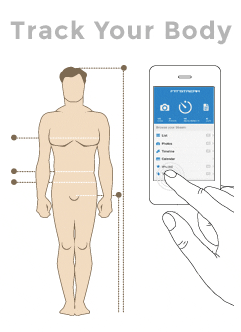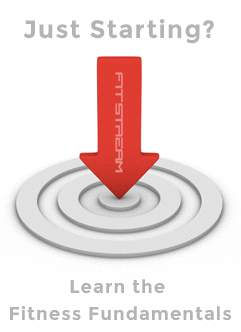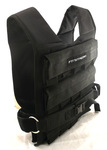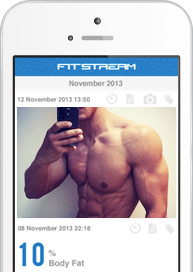How to do pull-ups on a bar
- Grasp the bar with an overhand grip and begin from a dead hang position (arms fully extended hanging from the bar, about shoulder-width apart).
- Pull up the body toward the bar by bending at the arms and clear it with your chin.
- Pause at the top of the exercise and then lower back down under control.
- Return to the starting position and repeat.
Pull-up Tips and Notes:
- Keep the movement slow and controlled at all times
- Ensure the body is tight throughout the exercise and keep the torso straight. A common mistake from beginners is to just let their body drop but this is very taxing on the elbows and can cause issues like tendonitis which will only heal with rest.
- Minimise 'kipping', rocking, or swaying movements for strict pull-ups.
- Pull-ups can be performed on a static bar or gymnastic rings. Using gymnastics rings for pull-ups allows the joints to track naturally due to the free rotation of the rings. Many people find rings a more preferable platform for pull-up exercises (see ring pull-up exercise for further details).
- Tip: Many people find it helpful to envisage yourself pulling the bar down to your chest, as opposed to lifting your body to the bar.
- Don't start your next rep until you've fully extended your arms - anything else and you're just cheating yourself for rep numbers. Full range of motion is harder but builds incredible strength.
Pull-ups guide
A primal favourite, the pull-up is a functional exercise that recruits multiple upper-body muscles in one swift, controlled movement. The ability to pull oneself up with the arms is a standard bodyweight exercise that sadly, on average, few people can do.
The pull-up demonstrates a superior strength to bodyweight ratio - it's just you, the bar, and the coordinated muscular effort of your upper-body muscles lifting you up.
This hugely rewarding exercise develops incredible strength, muscle definition, and builds a body that can climb and pull things toward it with ease.
For those that are less interested in performance and more with aesthetics - regular pull-ups will develop an athletic body, keeping body weight down, the waist trim, and shoulders wide and full. It's one of the most effective ways of developing the desirable v-shaped body and increases the waist-to-shoulder ratio which is a key factor to an attractive physique.
Pull-up Progression Exercises
It's not uncommon to be unable to complete a single pull-up. If you’re not yet strong enough, there are four main progression exercises on the overhead bar that will help you build up the required strength –
Dead hang
The first pull-up progression exercise is designed to introduce you to hanging from the bar.
Simply grip the bar and hang from it with arms fully extended. This will build grip strength and core body tension.
See dead hang exercise for more information. Once you can hold the exercise for 10+ seconds begin training for flex hangs to continue your progression to pull-ups.
Flexed-Arm Hang
A flex hang is a static bar hold, which involves simply holding yourself at the top of the pull-up exercise with your chin over the bar.
Once you can hold the flex hang position for 10+ seconds you are ready to start training for negative pull-ups.
See flex hang exercise for further details.
Negative Pull-ups
Negative pull-ups essentially involve performing only the lowering phase (the eccentric portion) of the pull-up exercise. This is the easiest portion of the pull-up exercise but by just performing this part of the movement, you're strengthening the muscles which will help with the pulling part too.
See negative pull-ups exercise for more details.
Body Rows
One of the final exercises in your path to unassisted pull-ups is body rows, which involves using a bar around waist height and having the feet on the ground during the lift so as to employ less of your body weight.
Gymanstics rings can be good equipment for this if you do not have a bar available at the correct height.
See the body row exercise for more information.
Assisted pull-up exercises
In addition to the progression exercises above you may find the following assisted pull-up exercise techniques useful if the exercise is still eluding you.
Assisted pull-ups are a basic approach to building the required strength by using methods that employ less of your body weight to make the exercise more achievable, but still challenging.
As you build strength you can lessen the amount of assistance until able to perform the exercise on your own.
We outline two approaches to assisted pull-up training below -
Leg assisted pull-ups
Begin with double leg assisted pull-ups - using a bench beneath the pull-up bar to support both legs during the exercise. Use the legs as little as possible during the lift.
As you develop the strength you can progress to single leg assisted pull-ups - using the same technique as before but only supporting one leg on the bench, with the other leg hanging.
Band assisted pull-ups
Using resistance bands for pull-up assistance is a cheap and effective technique for building up pull-up strength.
Resistance bands are available in various sizes and thicknesses to help support your body weight to make the exercise easier to perform. Simply 'choke' the resistance band to a pull-up bar or gymnastics rings (pass over the bar and pull the band back through itself) and place your knee or knees into the band loop.
As you get stronger you can use lighter resistance bands for less support. You can also control the amount of assistance given by the band by altering the length - the shorter the band, the more resistance is applied. To do this, simply wrap the band around the bar more times before 'choking' to control the band length.
 Advanced pull-ups
Advanced pull-ups
If you've mastered the pull-up and looking for some advanced techniques you can try the approaches below to keep progressing and develop a serious strength-to-bodyweight ratio.
Weighted pull-ups
Adding additional weight to pull-ups is an obvious way of increasing the intensity of the exercise.
You should only consider adding weight to your pull-ups once you can perform at least 3 sets of 10 bodyweight repetitions. Even then, start small and incrementally add weight as you gain strength.
There are a few different techniques for adding weight to the pull-up:
- A weighted vest offers a simple and versatile way of adding weight that's evenly distributed over your body.
- A dipping belt allows you to attach various weight plates to hang below the waist.
- Hold a dumbbell, or medicine ball between your feet for a bit of added weight, but this can be tricky to control as the weight increases.
Advanced pull-up techniques
- One-arm pull-up - very few people can do single-arm pull-ups. This is a seriously impressive and advanced pull-up exercise
- Muscle-up (see ring muscle-up) - the half dip, half pull-up exercise. Commonly performed on gymnastics rings the muscle-up is a great demonstration of both strength and technique
You can also try integrating the pull-up exercise into a series of seamless movements for combination exercises e.g. the pull-up
burpee.
Pull-up variations
The pull-up is one of our favorite exercises and has a huge number of variations that can be practiced if you want to add some variety to the basic exercise.
| Exercise | Notes |
|---|
| Muscle-up |
A step further than the pull-up which sees you move from below the rings or bar, to above, in one smooth, controlled action. |
| One-arm pull-up |
A hugely impressive feat of strength - consider learning the one-arm version of the standard pull-up. |
| Kipping pull-up |
The kipping pull-up variation is a CrossFit favourite and involves the use of the legs and building momentum to help with the movement, in contrast to a strict pull-up where the lower body remains engaged and static.
The legs are swung backward to build momentum and forcefully swung forward while pulling the body up with the arms.
|
| Chin-ups |
Hand positioning is changed to an underhand variation which means that the biceps are worked harder than regular overhand pull-ups. This exercise is slightly easier than standard pull-ups, which places greater emphasis on the muscles of the back. |
| Pull-up Burpee |
See the standard burpee exercise but during the jumping portion of the movement perform a pull-up, for a complex bodyweight circuit. |
| Headbanger Pull-ups |
Pull yourself up to the bar and then push and pull your body sideways (across the horizon of the bar), head in line with the bar. This is one of the best bodyweight exercises to build your biceps. |
| Typewriter pull-ups |
Otherwise known as side-to-side pull-ups, the typewriter is a more difficult variation of the archer pull-up which involves moving from each side and extending the body between both arms. Check YouTube for video demonstrations. |
| Clap pull-ups |
Clapping pull-ups require a great deal of power and momentum so that at the top of the exercise the hands are removed from the bar and clap together before descending. |
| Grip medley pull-ups |
Mix up the grips (underhand, overhand, wide, narrow) between pull-ups. |
| L pull-ups |
Performing the pull-up in a raised L position with the legs lifted perpendicular to the body. |
| Rope pull-ups |
Pulling the body up whilst gripping on to a rope. |
| Wide grip pull-ups |
Hand positioning is set out wider than shoulder-width.
Performing the pull-up with a wide grip helps you to partially isolate the upper back but it does reduce the range of motion, meaning that overall, the muscles will do less work.
|
|
Narrow grip pull-ups
Close-grip pull-ups
|
Hand positioning is set close together in a narrow grip, either right next to each other or around one fist apart. |
| Archer pull-ups |
At the top of the exercise the body is pushed out to one side as one of the arms is extended. A difficult exercise that is useful when training for the one-arm pull-up. |
| Switch grip pull-ups |
Flip between underhand and overhand grip positioning between pull-up repetitions. |
Pull-up FAQs
When should I move on to weighted pull-ups?
Regular bodyweight pull-ups should be developed first to a standard where you can perform 3 sets of 10 repetitions under strict form. Only then should you consider adding weight. When you're at this point, start small and add weight slowly and in fractional increments.
How can I increase my number of pull-ups?
Do pull-ups - lots of them, and often!! Also, try performing 3 slow (3-5 seconds) negative pull-ups for each pull-up you want to increase your max reps by.
 Fitstream AppTrack your fitness progress and see the difference for yourself with our free app
Fitstream AppTrack your fitness progress and see the difference for yourself with our free app








 Advanced pull-ups
Advanced pull-ups




